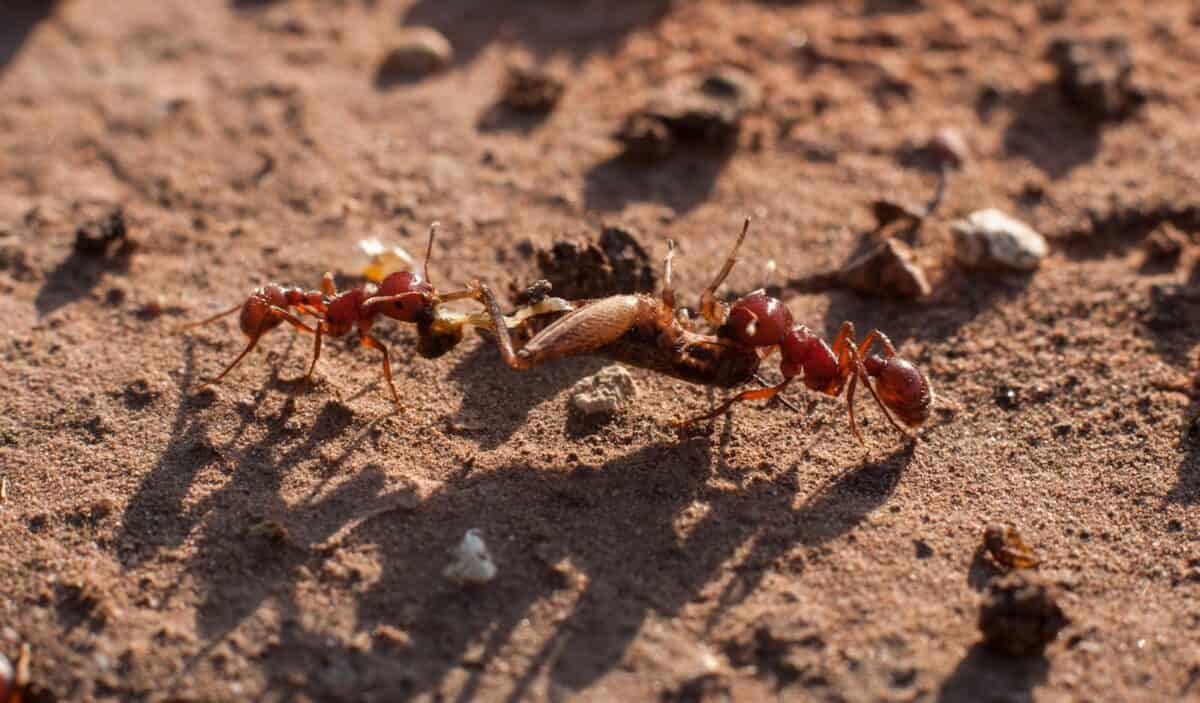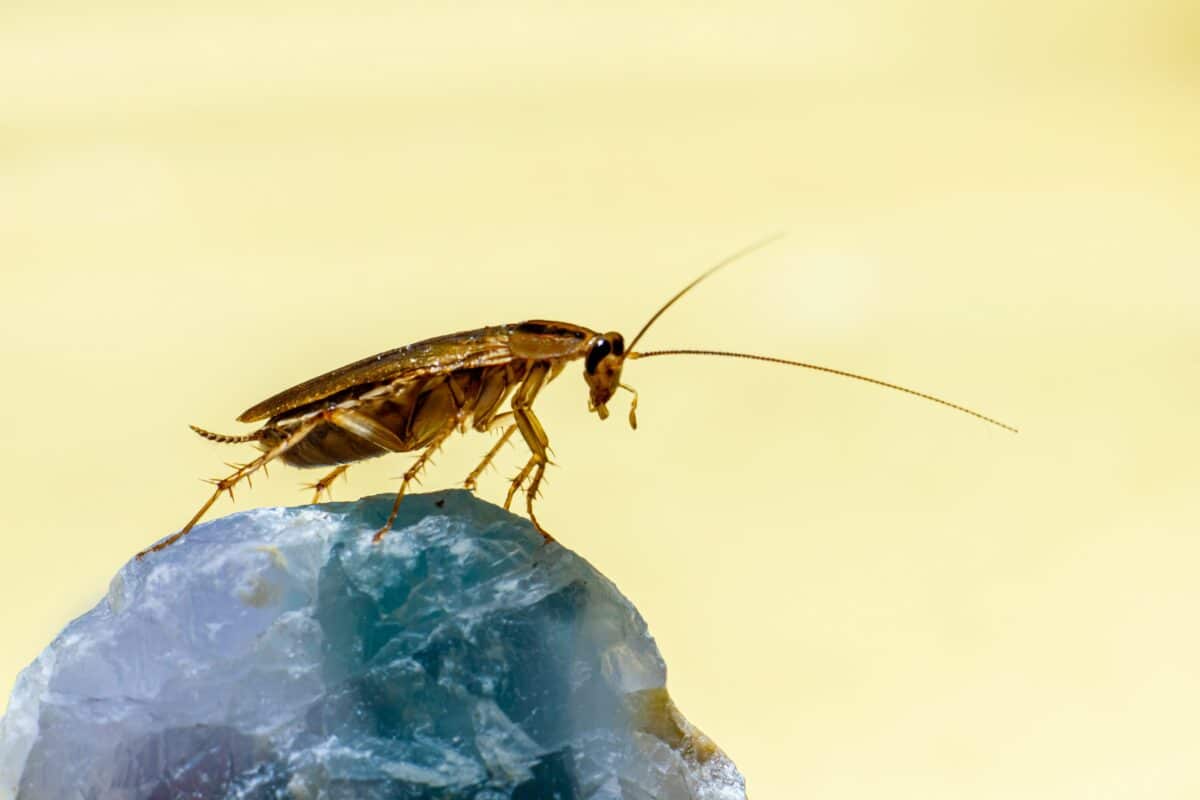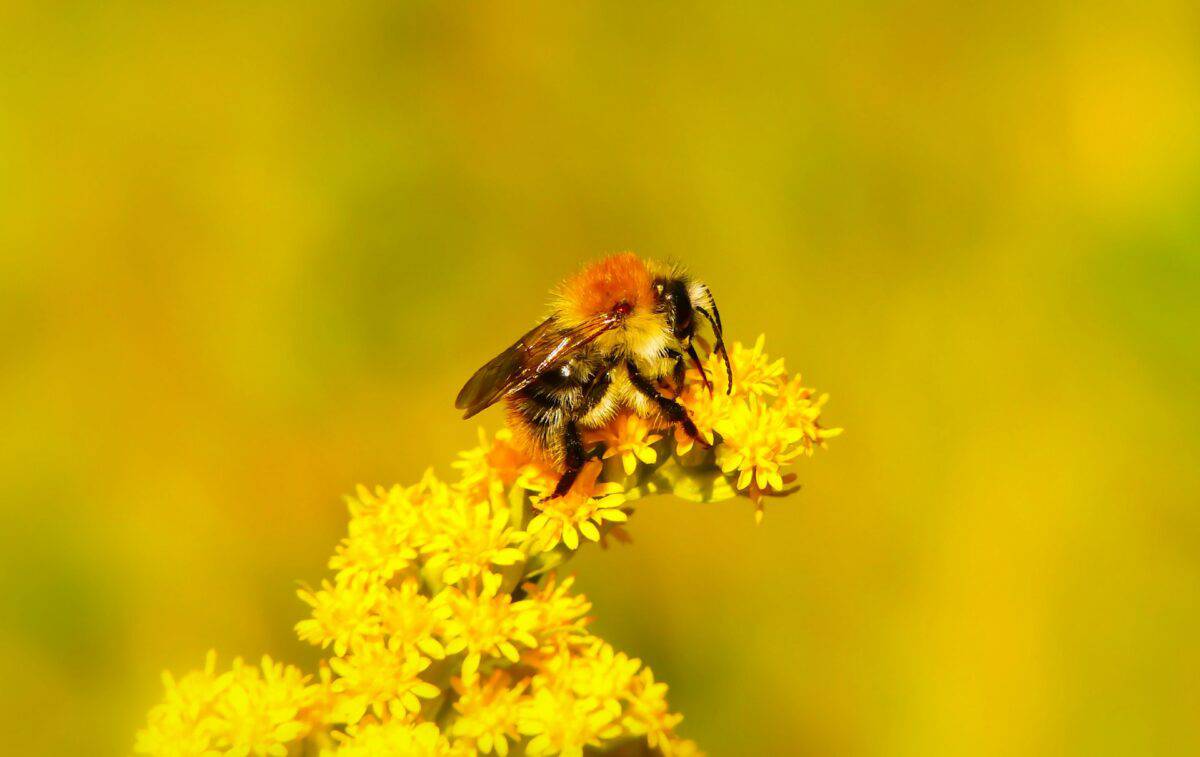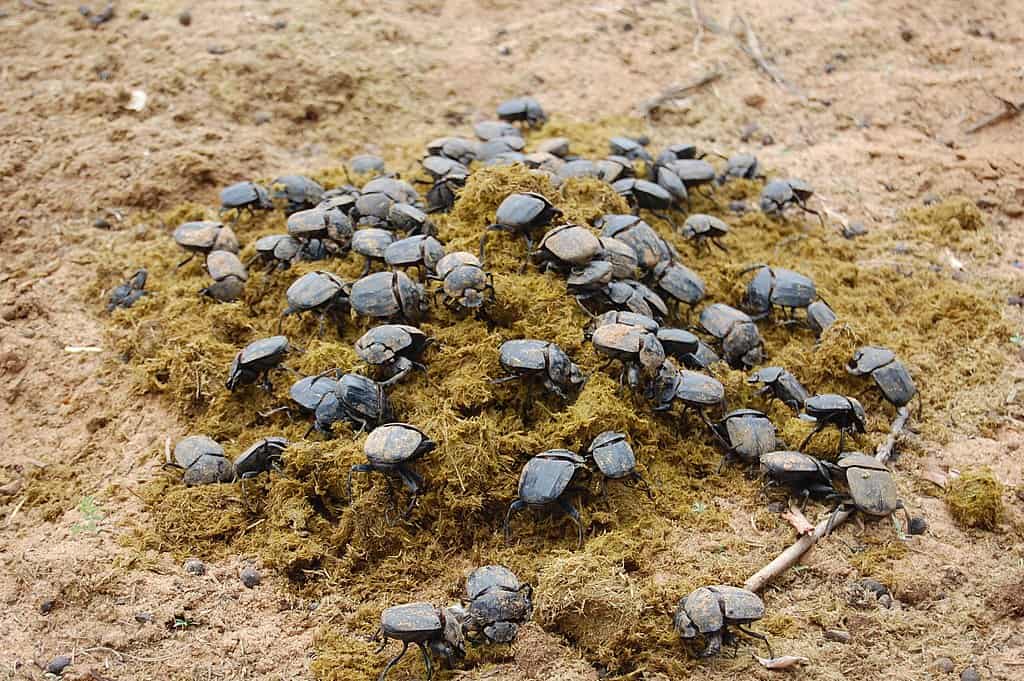When we think of intelligent animals, our minds typically jump to mammals like dolphins, elephants, and chimpanzees. However, beneath our feet and buzzing around us exists a fascinating world of six-legged creatures with remarkable cognitive abilities that challenge our understanding of intelligence. Despite having brains smaller than a grain of rice, many insects demonstrate problem-solving skills, social complexity, and learning capabilities that rival those of their mammalian counterparts. This article explores twelve insects that showcase extraordinary intelligence, defying our preconceptions about the cognitive limitations of these tiny invertebrates.
12. Honey Bees Nature’s Mathematical Geniuses

Honey bees (Apis mellifera) possess cognitive abilities that are truly remarkable for creatures with brains containing just 960,000 neurons (compared to our 86 billion). These industrious insects can perform complex calculations to determine the most efficient routes between flowers, effectively solving the “traveling salesman problem” that challenges even sophisticated computer algorithms. When scout bees discover food sources, they return to communicate the exact location through an intricate “waggle dance,” conveying distance, direction, and quality of the food source to their hive mates with remarkable precision.
Perhaps most impressively, honey bees demonstrate an understanding of the concept of zero—a sophisticated mathematical ability once thought unique to humans and a few other vertebrates. In experiments, bees learned to recognize “less than” relationships and correctly identified blank images as representing fewer elements than images containing one or more objects. Additionally, they exhibit impressive memory capabilities, recognizing human faces and remembering the locations of high-quality food sources for days or even weeks.
11. Ants Collective Intelligence Through Complex Societies

Ants represent one of Earth’s most successful life forms, and their intelligence emerges primarily at the collective level. Despite individual ants having relatively simple neural systems, their colonies function as superorganisms capable of sophisticated behaviors. Leafcutter ants, for instance, practice agriculture by harvesting leaves not for direct consumption but to cultivate specific fungi strains as their food source—a practice they’ve perfected for millions of years before humans developed agriculture.
Army ants display remarkable engineering prowess by constructing living bridges and scaffolds with their bodies to overcome obstacles. When forming these structures, they demonstrate a sophisticated cost-benefit analysis: if the detour is too long, they form a bridge; if it’s relatively short, they take the longer route rather than sacrificing workers to bridge formation. Furthermore, certain ant species such as Temnothorax albipennis can teach other colony members through a process called tandem running, where one ant leads another to a food source or new nest site—a form of teaching that meets all scientific criteria for the definition of teaching.
10. Jumping Spiders Miniature Hunters with Complex Cognition

While technically arachnids rather than insects, jumping spiders (particularly from the Portia genus) merit inclusion on this list due to their exceptional cognitive abilities. With brains the size of a poppy seed, these tiny hunters display problem-solving skills that rival those of many vertebrates. Portia spiders specialize in hunting other spiders and employ complex, adaptive hunting strategies tailored specifically to each prey species they encounter, suggesting an advanced understanding of other species’ behaviors.
Most remarkably, these spiders demonstrate planning abilities that were once thought to require much larger brains. Researchers have observed Portia spiders surveying an area, identifying an indirect path to reach prey, and then taking detours that temporarily take them away from their target—all to execute a surprise attack from an optimal position. This displays spatial reasoning, working memory, and the ability to plan multiple steps ahead. Some species can even learn through trial and error, remembering successful hunting techniques and modifying failed approaches for future hunts.
9. Paper Wasps Facial Recognition and Social Hierarchies

Paper wasps (particularly Polistes fuscatus) possess a surprising social intelligence that includes the ability to recognize and remember individual faces. These wasps live in colonies with complex social hierarchies, and their facial recognition abilities help them identify colony members, remember previous interactions, and maintain social structures. In laboratory experiments, wasps demonstrated the ability to distinguish between faces they had previously encountered and unfamiliar ones—a cognitive feat previously thought limited to more complex mammalian and avian brains.
Beyond individual recognition, paper wasps exhibit transitive inference—the ability to reason that if A is greater than B, and B is greater than C, then A must be greater than C. This logical reasoning allows them to understand their place in dominance hierarchies without having to fight every other wasp in the colony. Remarkably, wasps raised in isolation do not develop these abilities as readily as socially raised wasps, suggesting that social experience plays a crucial role in developing their cognitive capabilities—a pattern similar to that seen in many mammals.
8. Dragonflies Predictive Hunters with Complex Neural Processing

Dragonflies are among the most successful aerial predators on Earth, with capture rates exceeding 95% in some species. This remarkable success rate isn’t just due to physical prowess but depends on sophisticated neural calculations. When hunting, dragonflies don’t simply chase their prey; they predict where the prey will be and intercept it there—a computational feat requiring complex, real-time processing of trajectory, speed, and environmental factors.
The dragonfly’s brain contains specialized neurons that calculate interception courses based on the prey’s current motion, similar to predictive software used in military aircraft. More impressively, they can distinguish their prey from other moving objects in highly cluttered visual environments, filtering out irrelevant information to focus exclusively on their target. This selective attention represents a form of cognitive processing remarkably similar to that found in mammals, though achieved with a fraction of the neural hardware. Recent research suggests they may even have the ability to learn from previous hunting experiences, improving their technique over time.
7. Fruit Flies Surprising Learning Abilities in a Model Organism

Despite having only 100,000 neurons compared to a human’s 86 billion, the humble fruit fly (Drosophila melanogaster) possesses learning and memory capabilities that have astounded researchers. These tiny insects can form both short-term and long-term memories, recognize patterns, and modify their behavior based on past experiences. In laboratory settings, fruit flies learn to associate specific odors with rewards or punishments and retain this information for days—demonstrating associative learning similar to that famously observed in Pavlov’s dogs.
More surprising is their ability to predict and anticipate future events based on learned patterns. Researchers have found that fruit flies can learn time patterns associated with feeding, becoming more active shortly before their regular feeding time each day—a capacity for time memory previously thought too sophisticated for insects. Additionally, male fruit flies learn from sexual rejection, modifying their courtship strategies after unsuccessful attempts. These discoveries have revolutionized our understanding of insect cognition and raised intriguing questions about how complex behaviors can emerge from relatively simple neural architectures.
6. Cockroaches Adaptive Learning and Social Intelligence

Often reviled as household pests, cockroaches demonstrate remarkable cognitive abilities that have helped them survive for over 300 million years. American cockroaches (Periplaneta americana) show impressive learning capabilities, quickly adapting to changing environments and remembering solutions to navigational challenges. In maze experiments, cockroaches not only learn the correct path to food rewards but can retain this knowledge for weeks, demonstrating long-term memory comparable to some vertebrates.
Contrary to their solitary reputation, many cockroach species display social behaviors and collective intelligence. The German cockroach (Blattella germanica) exhibits social learning, with individuals learning new food preferences from interactions with experienced colony members. Even more fascinating, cockroaches make collective decisions through a democratic process when selecting shelter locations. When multiple suitable shelters are available, they assess options as a group and reach a consensus about which one to occupy—a form of swarm intelligence that requires individuals to both gather information and respond to social cues from their peers.
5. Bumblebees Tool Use and Innovative Problem Solving

Bumblebees have repeatedly demonstrated cognitive abilities that far exceed what their tiny brains should theoretically allow. Perhaps most impressively, bumblebees exhibit tool use—a behavior once considered exclusive to humans and a few other highly intelligent mammals and birds. In a groundbreaking study, bumblebees learned to pull strings to access food rewards, displaying not only the ability to master this novel task but also the capacity to learn it by observing other bees performing the action successfully.
Beyond tool use, bumblebees showcase remarkable flexibility in problem-solving. When faced with artificial flowers that require specific handling techniques to access nectar, they quickly develop innovative solutions, even improvising techniques not demonstrated by researchers. Even more remarkable is their ability for metacognition—awareness of their own knowledge limitations. Studies show that bees will opt out of difficult discrimination tasks when uncertain, similar to how primates and dolphins behave in comparable situations. This suggests a level of self-awareness previously thought impossible in insect brains and forces us to reconsider our understanding of what constitutes consciousness.
4. Praying Mantises 3D Vision and Strategic Hunting

Praying mantises possess the only known 3D vision system among insects, a sophisticated neural capability that allows them to precisely judge distances when capturing prey. What makes this especially remarkable is that they achieve this depth perception with a tiny fraction of the neurons that vertebrates use for the same purpose. This efficient neural processing is so impressive that it has inspired new approaches in computer vision and robotics, proving sometimes less complex systems can achieve similar results as our own visual processing.
Beyond their visual system, mantises display remarkable learning abilities and behavioral flexibility. Studies show they can learn to distinguish between different prey types and modify their hunting strategies accordingly. When hunting, mantises don’t simply react to prey movements but plan strategic ambushes, positioning themselves optimally and remaining motionless until the precise moment to strike. Each mantis develops individual hunting preferences and techniques through experience. Even more fascinatingly, some mantis species have learned to attract specific pollinators by mimicking flowers, showing an evolved understanding of other species’ behavior that they exploit to their advantage.
3. Monarch Butterflies Navigational Marvels with Generational Memory

Monarch butterflies (Danaus plexippus) undertake one of the most remarkable migrations in the animal kingdom, traveling up to 3,000 miles from North America to specific overwintering sites in Mexico. What makes this feat truly extraordinary is that individual butterflies completing the journey have never been to these locations before—the entire migration spans multiple generations. This suggests a form of inherited navigational knowledge that is passed genetically from one generation to the next, a complex programming that directs them to specific mountain ranges they’ve never seen.
To accomplish this navigational miracle, monarchs integrate multiple sensory inputs including the position of the sun, Earth’s magnetic field, and polarized light patterns. Their brain contains an internal clock mechanism that compensates for the sun’s movement throughout the day, allowing them to maintain a consistent heading regardless of time. Recent research has identified specific neurons in the butterfly brain responsible for processing these complex navigational cues. This sophisticated directional sensing achieved with a brain weighing less than 0.5 milligrams demonstrates that remarkable intelligence can exist in miniature neural systems optimized for specific complex tasks.
2. Dung Beetles Celestial Navigation and Spatial Awareness

Dung beetles have emerged as unexpected stars in the study of insect intelligence, particularly for their remarkable navigational abilities. After forming a ball from animal dung, these beetles need to move their prize away from competitors as quickly as possible. To do this efficiently, they maintain a straight line away from the dung pile—a seemingly simple task that actually requires sophisticated neural processing. Studies have revealed that dung beetles navigate using celestial cues, including the sun, moon, and even the pattern of polarized light from the Milky Way, making them the only known insects to use the galaxy for orientation.
What’s particularly impressive is the beetles’ ability to transfer this information into a mental map. Before beginning their journey, dung beetles perform a characteristic “dance” atop their dung ball, during which they appear to be taking a snapshot of the sky. They then use this mental image as a reference point throughout their journey, allowing them to maintain a straight path even as celestial positions change. When researchers placed tiny hats on the beetles to block their view of the sky, their ability to navigate in straight lines disappeared. This celestial compass system represents a sophisticated form of spatial awareness that rivals the navigational abilities of many vertebrates.
1. Crickets Memory, Learning, and Cultural Transmission

Crickets possess a range of cognitive abilities that challenge our expectations for insect intelligence. Female crickets demonstrate impressive learning capabilities in mate selection, remembering the quality of previous mates and using this information to make better choices in future mating decisions. This capacity for individual recognition and memory of past interactions suggests a social intelligence that extends beyond simple stimulus-response behaviors typical of less cognitively advanced insects.
Perhaps most fascinating is the evidence for cultural transmission in cricket populations. Male crickets produce species-specific songs to attract mates, but these songs can evolve rapidly in response to selection pressures. On the Hawaiian island of Kauai, researchers documented the emergence and spread of a new, silent wing mutation that protected male crickets from a parasitic fly that locates them by their songs. Remarkably, some males without this mutation learned to produce a different song pattern that mimicked the protected males—a behavior that spread through the population through social learning rather than genetic inheritance. This represents a rare documented case of cultural evolution in insects, suggesting cognitive capacities for learning and innovation that were once thought exclusive to vertebrates.
Conclusion: Rethinking Insect Intelligence

The cognitive abilities displayed by these twelve insects challenge our fundamental assumptions about intelligence and brain size. Despite having nervous systems orders of magnitude smaller than those of mammals, these remarkable invertebrates demonstrate problem-solving, learning, memory, and even forms of self-awareness that were once thought impossible without larger brains. Their achievements suggest that intelligence can evolve through different architectural solutions—not just by scaling up the number of neurons, but by optimizing neural connections and developing specialized processing modules for specific cognitive challenges.
These discoveries carry profound implications for our understanding of consciousness and cognition. If insects with fewer than a million neurons can demonstrate awareness, learning, and problem-solving, we must reconsider our definitions of intelligence and the neural requirements for consciousness. Furthermore, these findings have practical applications in the development of artificial intelligence, suggesting that efficient, specialized neural networks might achieve sophisticated results without the massive computational resources currently required for AI systems.
As research continues to reveal the hidden cognitive worlds of insects, we’re forced to acknowledge that intelligence in nature takes many forms, often in packages we’ve historically overlooked or dismissed. The miniature marvels of insect cognition remind us that intelligence isn’t measured by brain size alone, but by how effectively a nervous system—regardless of scale—allows an organism to perceive, learn about, and successfully navigate its world.
Perhaps most importantly, recognizing the sophisticated cognitive lives of insects might inspire greater appreciation for these often-maligned creatures, encouraging both conservation efforts and a more profound respect for the diversity of minds that share our planet.
- 10 Common Chicken Behaviors and What They Mean - August 9, 2025
- 14 Creatures That Can Freeze and Thaw Back to Life - August 9, 2025
- 10 Animals That Risked Their Lives to Save Humans - August 9, 2025

